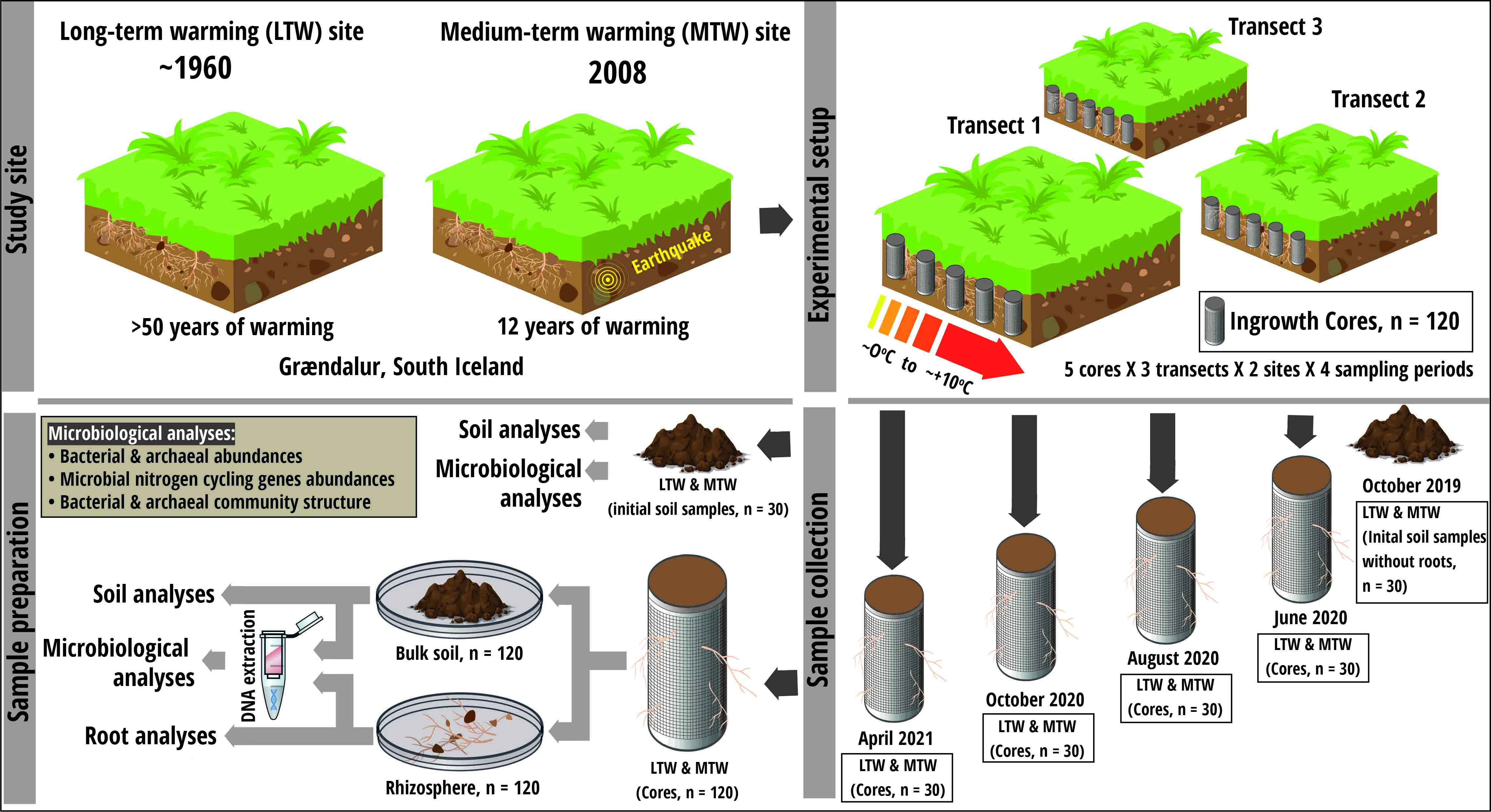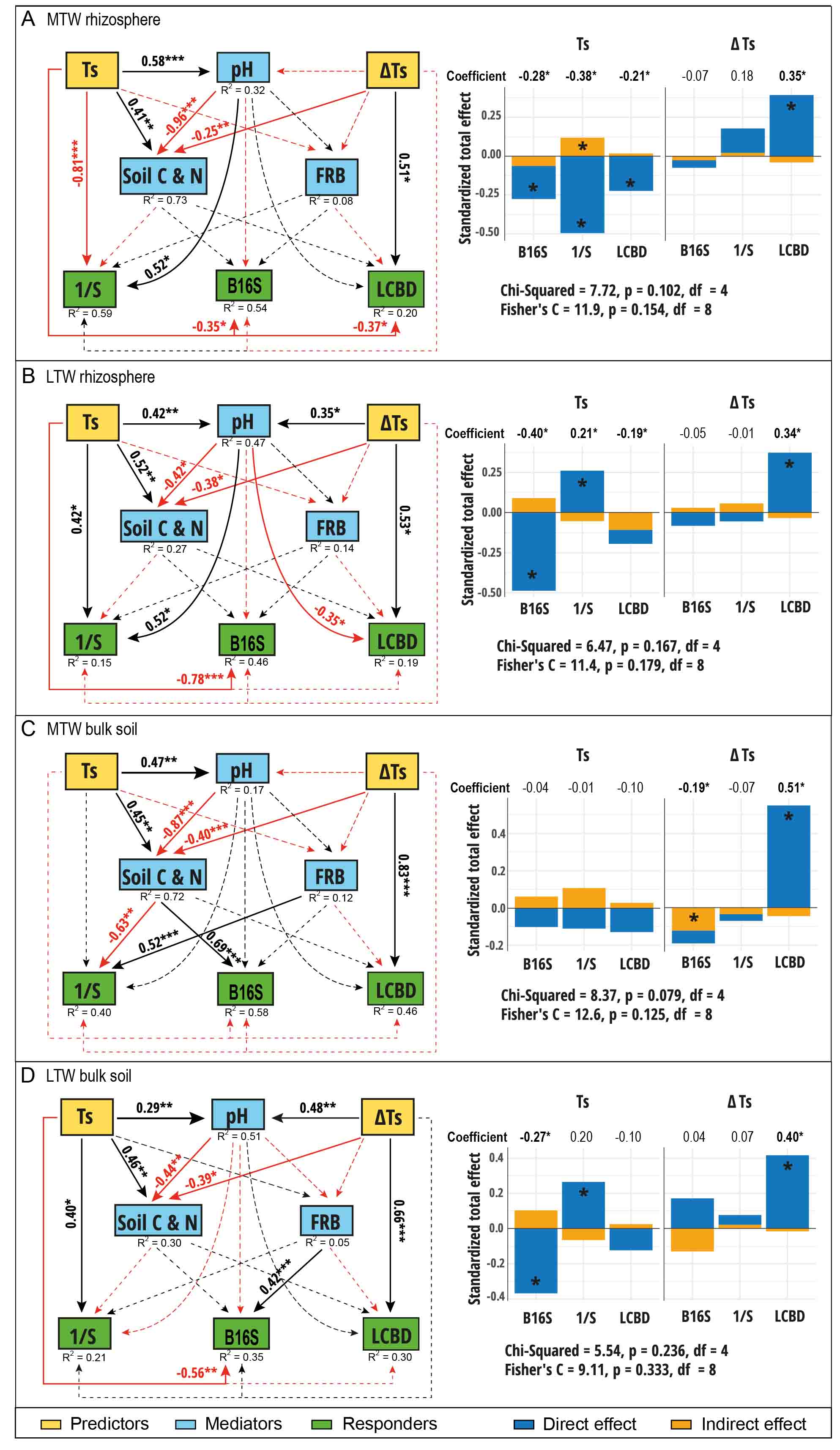Effect of warming magnitude and duration on the soil microbiome of subarctic Icelandic grasslands
Background
Anthropogenic activities have caused global warming, leading to significant climate changes. The Intergovernmental Panel on Climate Change (IPCC) 2022 reports predict a potential temperature rise of 3–5°C by 2100 in the worst-case scenario. Increases exceeding 2°C and 3°C are likely to cause irreversible biodiversity losses and structural changes in terrestrial and freshwater ecosystems, respectively. In recent decades, global warming has exhibited varied patterns, with the Arctic and subarctic regions undergoing a rate approximately four times faster than the global average. Soil microorganisms are crucial to terrestrial ecosystems, driving biogeochemical cycling, plant symbiosis, productivity, and soil stability. Changes in their composition, diversity, and function due to global warming could significantly impact global ecosystem functioning. This study aims to investigate how soil warming affects the structure, abundance, and nitrogen cycling capabilities of prokaryotic communities in the rhizosphere and bulk soil across geothermally warmed gradients in two Icelandic grasslands with varying durations of warming.
Geothermally warmed areas in Iceland provide natural temperature gradients, making them ideal for studying the impacts of soil warming. To explore these effects, root ingrowth cores were strategically placed along these temperature gradients at two grassland sites experiencing warming over 11-13 years (MTW) and over 60 years (LTW), with three replicate transects for each site (Fig.1). Soil temperatures were continuously recorded, and core samples were collected four times from 2019 to 2021.
Microbiological analyses: Bacterial and archaeal community structure in rhizosphere and bulk soil were assessed using amplicon sequencing, and their abundances were quantified via qPCR. In addition, the abundance of microbial groups involved in N-cycling processes, including N-fixation (nifH), nitrification (bacterial, archaeal, and comammox amoA), denitrification (nirS, nirK, nosZ clade I and II), and dissimilatory nitrate reduction to ammonium (nrfA) was quantified.
Soil and root analyses: Soil chemistry analysis includes measuring pH levels, total carbon, total nitrogen, dissolved nitrogen, and dissolved organic carbon content. Root analysis encompasses the assessment of fine root biomass.
Key R packages utilized in this study include:
- TITAN2: Used for identifying threshold temperatures that trigger shifts in soil microbial community structure.
- Betapart: Assesses the contributions of species replacement and richness differences to community structure changes.
- iCAMP: Evaluates the impact of warming on community assembly mechanisms.
- NetComi & WGCNA: These tools are employed for constructing co-occurrence networks and linking microbial clusters with nitrogen cycling genes and environmental factors.
- PSEM: Applies structural equation modeling to assess the direct and indirect effects of warming on the bacterial community.
Key results
- The abundance and structure of the prokaryotic community in the rhizosphere showed greater sensitivity to warming compared to bulk soil. Additionally, the warming response in both soil compartments was early in MTW sites than in LTW sites, indicating an adaptation of the microbial community to prolonged warming.
- Community assembly was primarily driven by drift processes, followed by homogeneous selection, indicating that random factors in the natural grassland ecosystem influenced the assembly process more than deterministic factors. A shift in community assembly processes due to warming was observed around +2°C in MTW and +4°C in LTW.
- Microbial co-occurrence network analysis revealed that soil warming strongly influenced the relationships of microbial taxa, leading to the formation of subclusters of positive and negative warming responders within the community.
- Structural equation modeling indicated that warming had a more direct effect on the bacterial community than indirect effects mediated through soil and roots (Fig.2).
- Soil warming significantly increased the abundance of microbes involved in nitrous oxide emission in the rhizosphere and bulk soil, with a more pronounced impact in LTW grassland soils.
Conclusions
The microbial community in grasslands, warmed for over 60 years, has adapted effectively. Despite the duration, warming has driven species replacement, potentially favoring nitrous oxide emitters. This trend could intensify with prolonged warming, leading to a possible escalation of nitrous oxide emissions over time.

